Arts
Sexy In Bollywood

No sex please, we are Indians!
In the imaginary zone of world history India has been celebrated as a land of saints, snake charmers and the servile. Yet, few would believe that India and entertainment are almost synonymous. In fact God is supposed to have created the world for her entertainment! And cinema seats itself at the peak of pleasure! From its inception Indian Cinema has been indebted to Hollywood for shaping its dramatic film grammar and the resultant heroic look. And like most heroic narratives, it is also essentially rooted in the magnetic forces of sex and violence.
But despite its orientation to Hollywood, Indian Cinema confounds cineastes of the world with its own concoction of titillating dance routines, sentimental dialogues and garish sets. As a result, there are very few films that can match the spectacular action of standard Hollywood films. Violence simply put, makes sense only when it achieves the status of a spectacle costing a lot of money. When they are not spectacular, “action” scenes look amateurish even to lay audiences. Sex, on the other hand, depends largely on the attractiveness of human icons and the narratives of sexuality engendered in culture-specific registers. So is it an economic imperative that drives Indian Cinema to such depictions or is it also a kind of indigenous dramatic aesthetic? For a nation so steeped in sensuous depictions of all its icons, what does it mean to be “sexy”? Be it the male image or female, religious or secular, traditional or modern all our iconography is located in the Sringara rasa – the “pleasure
principle.” For the average Indian, images of the Shiva Linga, or the amorous Radha-Krsna escapades or even the marital wars between our celestial divinities are routine narrative incantations of a nation’s sexuality. I do not want to attempt a psycho-analytic perspective here, but from a social point of view, sexuality becomes evident only through cultural products where manipulations of the female body are scripted to suit a highly patriarchal society. Be it the restrictive morality tales of Ramayana and the codes inscribed in the Manu Smriti, which have enshrined upper class values, or the vast repertoire of Bhakti poetry, which have epitomized marginalized vernacular forces’ ways of expressions, the conflict has seen this contradictory South Asian moral battle for a long time. Although expressions of the sub-altern vernacular seem more liberating, they too are not bereft of “patriarchal” syndromes. How else could one explain their constant assimilation into the upper class mainstream on a periodic basis? So how can Bollywood escape being “sexy,” by not portraying these feelings in its own right? On the other hand we certainly need to ask as to why did our progressive sacred leaders, including Mahatma himself, have such strong reservations about the “perversions” of Indian Cinema. Why were Indian cinema and her filmmaking community alone targeted as being deeply vulgar and irreverent by the Indian intelligentsia? Why were Indian films alone subject to the harsh scissors of censorship while all other performing artists and even writers have complete freedom of expression?
At the outset I would like to state rather bluntly that this condescending look upon Indian cinema is a sign of our class-caste mindset. Indian Cinema, although it was funded by wealthy financiers, was a product largely shaped by the lower-classes and the backward castes. It was seen as an extension of the Nautanki or the Therukoothu, which were theatrical performances for the poor or for foot-soldiers on the warfront! The upper classes patronized their Shastriya culture while the lower classes patronized the Desiya variety. Why the intelligentsia could not just ignore this cinema completely is an irony which continues to stare right in our faces Simple! Cinema was the ultimate in the line-up of advanced industrial products, the first medium capable of delivering the products of western capitalism to the maximum number of viewers. There was no way to avoid this medium, which required little or no specialization. The upper classes had to accept it. So isn’t it rather ironical that Indian advertisements and corporate cheerleaders in IPL cricket matches can get away with oodles of oomph power, but “Item” numbers of Raakhi Sawant get chastised under a microscope? As long as the sanction comes from the upper class/ caste, such depictions of sex and sexuality are valid, but when expressed by the “other,” there is a pressure to censure. It is within this contradictory frame that we need to study the role of sexuality in the Desi paradigm of popular Indian Cinema. Interestingly, parallel cinema becomes by default the Shastriya or classical Indian cinema and develops her own strategy to illustrate sex and sexuality. We will not get into that area for now simply because the sheer energy of Madhuri Dixit warrants more attention than Nandita Das! So let’s cut to the chase!
At the outset, let me state that I am using Madhuri Dixit in an emblematic manner rather than the real persona. What does Madhuri Dixit as a concept signify? Does watching Madhuri Dixit link the notion of “seeing” the film as a “male gaze” with the patriarchal viewer’s need for a voyeuristic position to fulfill a sexual desire within the confines of an urbanized system? Is watching Madhuri Dixit the Indian equivalent of a triple X rated film? I am sure the majority of Indian viewers would disagree, despite the fact that unlike many developed nations, we do not openly exhibit triple X rated books or films. Sexuality, or the depiction of Indian women on the screen, has a dual agenda. While on one hand it was part of a larger nationalist discourse projecting the abstract “Nation” as a woman, Indian cinema projected the idea of the “Occidental” as a dangerous seductress. In films until the late 1970s, icons/ actors like Asha Parekh or Nutan were valorized for safe-keeping the “cultural” values of a nation while westernized cabaret dancers like Helen and Sashikala were temptresses seeking to lure the “hero” into the path of disaster and finally court an untimely death.
There was the third zone too, namely that of the courtesan or the intelligent seductress. The various depictions of the Kothewali or the Nautch girl showed us the woman who was strongly in control of her sexuality but was doomed to face the consequences of her tragic feudal past. Images of Meena Kumari in Pakeezah or in Saheb Bibi Aur Ghulam give us a glimpse of the graceful woman who was deeply cultured, but misunderstood to be a prostitute. What was the nationalist implication of this figure? Was she resonating the angst of a nation who wanted to free herself for acceptance in an urbanized India? As if in a serendipitious manner, we had a powerful woman in Mrs Indira Gandhi also dominating the political scene in equally complex manners. And suddenly after Indira Gandhi’s emergency collapsed in 1977 a new definition for the “Nation” surfaced on the Indian screen. Old archetypes were sacrificed to give way for new definitions. I would like to argue that the way in which Madhuri Dixit’s iconization, starting with Tezaab (1982), supplanted earlier depictions of earlier adulterous vamps is an interesting paradigm within which to study the discourse of sexuality in Bollywood and the rest of Indian Cinema. Madhuri Dixit resurrects the sensuousness of the courtesan while fusing it with the dexterity of the new urban woman. She finally combined the pure Sita with the amorous Radha and perfected the
art of impersonation. No more was the heroine going to be inhibited and very quickly she relived herself of the obligatory sari and switched over to jeans, shorts or even a bikini. Prior to this the heroine was allowed to don the western forms of allurement only prior to the terms of “marriage” and once she was committed an entire holier-than-thou dress code followed. Today there is no dress code at all. In fact, more the makeover, higher the eye-balls. Was it as simple as attributable to a nation emerging from the throes of a rather restrictive 1975 Emergency period? Could one film like Tezaab alter the entire course of Indian Cinema? Obviously not. The early 1980s saw the relaxation of many restrictive rules on color film stock, the coming of color TV and easy access to VHS tapes of films from all over the world. A booming media with a young and sexy Rajiv Gandhi at the helm after his mother was assassinated in 1984 set a trend for modernization rolling never to look back. Another important factor was the arrival of equally competent male seducers like Jeetendra, Rishi Kapoor, Mithun Chakravarty or Kamalahasan who could give their gyrating contemporaries like Sri Devi or Rati Agnihotri a run for their money. Choreographers like Prabhu Deva and Saroj Khan set new parameters, which could even send Michael Jackson to an old age sanatorium! Such was the response all across India that cinema seems to have set the grounds for the legendary liberalization and the wooing of the NRIs that India was all set to witness in the 1990s.
So when I see Kajol dancing away in the rain wearing the skimpiest of wet skirts in Dilwale Dulhaniya Le Jayenge and walking away into the hearts of millions of viewers without batting an eyelid I can see a nation and her people celebrating the purpose of being an Indian. After all did not God construct the universe for her entertainment?
|


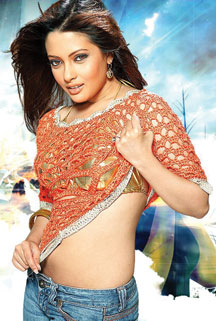


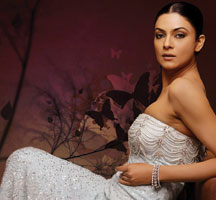
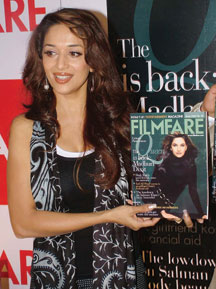
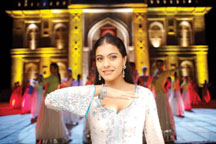
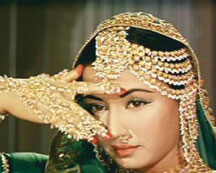
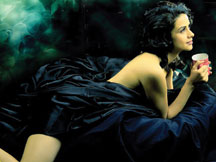
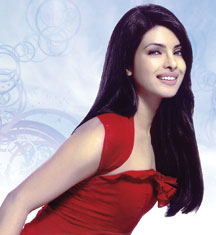
You must be logged in to post a comment Login